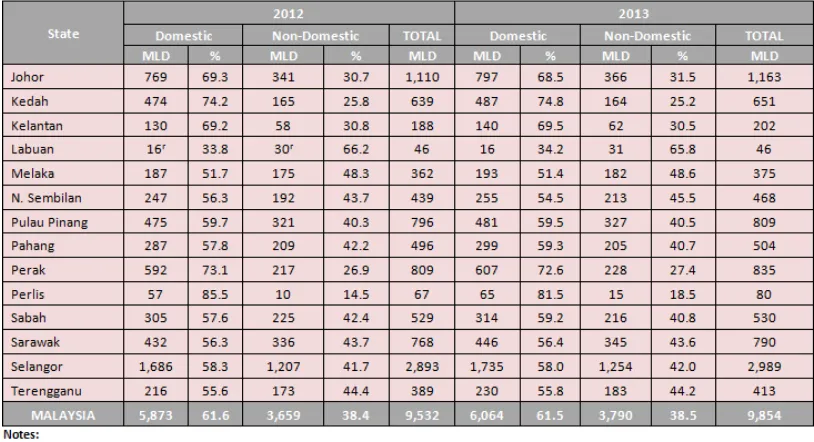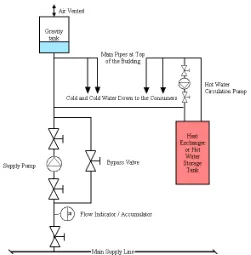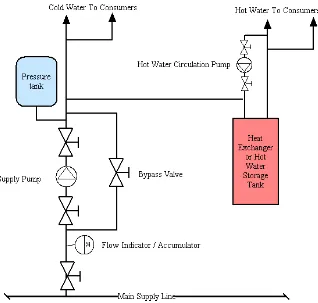UNIVERSITI TEKNIKAL MALAYSIA MELAKA
MOTION SIMULATION ANALYSIS OF
PORTABLE ACCUMULATOR FOR DOMESTIC WATER SYSTEM
This report is submitted in accordance with requirement of the Universiti Teknikal Malaysia Melaka (UTeM) for the Bachelor Degree of Manufacturing Engineering
(Manufacturing Design) with Honours.
by
LAI WEI WEIN B051110076 911021-14-5194
DECLARATION
I hereby, declared this report entitled “Motion Simulation Analysis of Portable Accumulator for Domestic Water System” is the results of my own research except as cited
in references.
Signature : ………
Author’s Name : ………
APPROVAL
This report is submitted to the Faculty of Manufacturing Engineering of UTeM as a partial fulfilment of the requirements for the degree of Bachelor of Manufacturing Engineering (Manufacturing Design) with Honours. The member of the supervisory committee is as follow:
(Signature of Supervisor)
ABSTRACT
ABSTRAK
ACKNOWLEDGEMENT
I would like to express my deepest appreciation to all those who provided me the possibility to complete this report. A special gratitude I give to my supervisor Engr. Zulkeflee bin Abdullah who had given me many learning opportunities throughout the preparation of this report during this semester. Besides giving me stimulating suggestions, he had also helped me to coordinate my project, especially in writing this report. I am highly indebted to Engr. Zulkeflee for his guidance and constant supervision as well as for accessing my progress and also for his support in completing this report.
Furthermore, I would also like to acknowledge with much appreciation of my co-supervisor Dr. Mohd Shahir bin Kasim for providing decent suggestions and necessary information during the completion of this report.
TABLE OF CONTENTS
1.5 Significance of Research ...4
1.6 Operational Definition ...5
1.7 Concluding Remarks ...6
Chapter 2 Literature Review ... 7
2.1 Domestic Water System ...7
2.1.1 Domestic Water Supply – Gravity Tank ...8
2.1.2 Domestic Water Supply – Pressurized Tank ...9
2.2 Pipelines Materials and Properties ...11
2.2.1 Pipeline Material – Metal ...12
2.2.1.1 Stainless Steel ...12
2.2.1.2 Cast Iron ...13
2.2.1.4 Pipeline Material – Copper ...15
2.2.2 Pipeline Material – Plastic ...17
2.2.2.1 Acrylonitrile Butadiene Styrene (ABS) ...17
2.2.2.2 Chlorinated Polyvinyl Chloride (CPVC) ...18
2.2.2.3 Cross-Linked Polyethylene (PEX) ...19
2.2.2.4 Polyvinyl Chloride (PVC) ...20
2.2.2.5 Polybutylene (PB) ...21
2.3 Water Hammer ...21
2.3.1 Causes of Water Hammer ...23
2.3.2 Consequences of Water Hammer ...25
2.3.3 Water Hammer Mitigation Measures ...26
2.4 Accumulator ...27
2.4.1 Types of Accumulators ...28
2.4.1.1 Weight-Loaded Piston Type Accumulator ...28
2.4.1.2 Diaphragm (or Bladder) Type Accumulator ...29
2.4.1.3 Spring Type Accumulator ...30
2.4.1.4 Hydropneumatic Piston Type Accumulator ...31
3.3.1 Research Design ...38
3.3.2 Part Modelling of Accumulator Model ...39
3.3.3 Accumulator Model with 1 Bladder Ball ...40
3.3.4 Accumulator Model with 2 Bladder Balls ...41
3.3.5 Accumulator Model with 3 Bladder Balls ...42
Chapter 4 Results ... 43
4.1 Summary of Responses ...43
4.2 Computational Fluid Dynamics (CFD) Analysis ...48
4.2.1 Setup of Parameters ...48
4.2.2 Simulation Results ...49
4.2.3 Analysis Report ...50
4.3 Analysis Results ...51
4.3.1 Accumulator with One Bladder Ball ...51
4.3.2 Accumulator with Two Bladder Balls...52
4.3.3 Accumulator with Three Bladder Balls...53
Chapter 5 Discussion ... 54
5.1 Comparisons between Accumulator Design ...54
5.2 Substitution of Bladder Ball Materials ...55
5.3 Analysis of Optimal Design and Material ...56
Chapter 6 Conclusion ... 58
APPENDICES
A 2D Assembly Drawing and Analysis Result for Accumulator with 1 Bladder Ball B 2D Assembly Drawing and Analysis Result for Accumulator with 2 Bladder Balls C 2D Assembly Drawing and Analysis Result for Accumulator with 3 Bladder Balls D Analysis Results for ABS Bladder Ball
E Analysis Results for Copper Bladder Ball F Analysis Results for Glass Bladder Ball G Analysis Results for Steel Bladder Ball
LIST OF TABLES
2.1 Water Consumption 2012 – 2013 7
3.1 3D CAD Model of Accumulator Parts 39
4.1 Parameters Defined In Autodesk Simulation CFD 2015 49
4.2 Results Obtained For Accumulator with 1 Bladder Ball 51
4.3 Results Obtained For Accumulator with 2 Bladder Balls 52
4.4 Results Obtained For Accumulator with 3 Bladder Balls 53
5.1 Comparisons for Three Accumulator Designs 54
5.2 Comparisons for Bladder Ball Materials 55
Chapter 1
Introduction
1.1Background
Hydraulic transients are known as pressure surge or water hammer. It is caused by either planned or sudden changes of the water distribution network. The sudden change in the liquid velocity generates a pressure wave which can have serious effects, ranging from pump defects to pipeline failures. The hydraulic transient phenomenon may also cause bad water quality and health implications.
The more severe water hammer are caused by the quick change at the inlet and the outlet of a water system. The most common causes are valves rapidly closing or pumps suddenly going online and offline. Fluid at liquid state are highly non-compressible. When an outlet valve closes quickly, the energy in the water flow will cause the nearest valve to compress. It acts like a spring, where the energy in the water system flows in a reverse direction, sending a shockwave until it hits a barrier, such as the pipeline joint. Energy from the shockwave reflects from the barrier and returns to hit the valve again. The shockwave moves back and forth within the pipeline until friction depletes the energy.
In pipeline systems, the sudden change of liquid velocity are caused by (Igor J. Karassik, Joseph P. Messina, Paul Cooper, 2008):
1. Pump and valve activity in pipelines 2. Vapour pocket collapse in water system
Total surge pressure may significantly rise above the maximum allowable pressure of the system, causing serious damage to the pipelines. The water hammer effect can be reduced if the problems are identified and solved through analysis and design changes. There are three design guidelines which eases the water hammer effect (Igor J. Karassik, Joseph P. Messina, Paul Cooper, 2008):
1. Changing pipeline dimensions (profile and diameter)
2. Implementing better valve and pump activity operational methods 3. Design and fixing of surge control devices
In this project, the discussion will be made on the design and installation of a surge control device – hydraulic accumulator. A hydraulic accumulator is a device which stores potential energy in the form of fluid pressure, where the pressure will be released when required. The accumulator installed near the rapidly closing valve eliminates hydraulic transient by suppressing pressure pulsations or high pressure surges. There are three basic types of accumulator (Trinkel, 2007):
i. Weight-loaded accumulators ii. Spring-loaded accumulators iii. Gas-loaded accumulators
1.2Problem Statement
Hydraulic transients, or water hammer, is a common phenomenon when a water faucet in a house is shut rapidly. This produces a loud banging or hammering noise. The water hammer effect may cause pump failures, water system fatigue, pipe rupture and even the backflow of contaminated water. Besides that, it can cause health problems and can also lead to greater leakage and reduced reliability.
Existing accumulators are used mainly in large manufacturing plants and systems where they are used to absorb high capacity of pulsations and shocks. Such accumulators are not suitable for domestic use which have much lower volume compared to the industries.
When water hammer occurs in houses, it is most likely that the pipelines have become waterlogged. To stop the water hammer, the only way is to shut off the water supply of the entire house, drain the whole system down, shut off all the valves and turn the water back on. The conventional method to solve the water hammer problems are very time-consuming.
1.3Objective
1. Study and identify problems faced by domestic water user. 2. Design a portable accumulator for domestic water system.
1.4Scope
This study will only include problems faced by domestic water users caused by the water hammer effect. Other factors which cause the damage of pipelines will not be discussed. Next, the designed portable accumulator is only for domestic use as it is of a small capacity sufficient to overcome problems of domestic water systems only. Furthermore, this study will only focus on the Motion Simulation Analysis of the portable accumulator. The functioning mechanism of the accumulator will be conducted by others and will not be discussed in detail.
1.5Significance of Research
Water hammer is highly noticeable while using appliances that require large volume of water, including toilet flushes, washing machines and dishwashers. This is because the appliances use quick-acting solenoid shutoff valves, where water stops suddenly when the valves are shut.
1.6Operational Definition
1. Hydraulic transient
Hydraulic transient are disorders in the water caused by change in state. The disorders are changes in pressure and flow of the water system which cause production of pressure wave throughout the system.
2. Water hammer
Water hammer is the banging or thumping noise in pipelines, normally caused by pressure surge when a fluid changes direction instantaneously or is forced to stop.
3. Surge pressure
Surge pressures are generated by the change in flow velocity in a piping system. The sudden changes in velocity are caused by pump and valve operations, collapse of vapour pocket or expulsion of air from the piping system.
4. Surge control device
Surge control device are equipment installed to pipelines to relieve and prevent surges.
5. Domestic water system
Domestic water systems provides consumer with sufficient clean water. Common examples are gravity storage tanks and pressurized tanks located on the top floor of the building, connected to supply pumps.
6. Hydraulic accumulator
7. Portable accumulator
A portable accumulator is a lightweight, portable unit used to stabilize hydraulic pressure.
1.7Concluding Remarks
Chapter 2
Literature Review
2.1 Domestic Water System
According to the statistics provided by Suruhanjaya Perkhidmatan Air Negara (SPAN) as shown in Table 2.1, the domestic water consumption in Melaka is 237 litres per person per day in both year 2012 and year 2013 (Suruhanjaya Perkhidmatan Air Negara, 2014a). In year 2012, the domestic water consumption is 187 million litres per day (MLD) (51.7%) and 193 MLD (51.4%) in year 2013 (Suruhanjaya Perkhidmatan Air Negara, 2014a).
Domestic water use can be divided into indoor and outdoor household water usage. Some examples of indoor uses are drinking, cooking, bathing, washing clothes and flushing toilets. Some examples of outdoor uses are washing automobiles, watering gardens and maintaining swimming pools. Water use depends on geographic location and season, mostly caused by the differences in climate. In drier regions, water withdrawal are high for irrigation and landscaping purposes. (US Environmental Protection Agency, 2008).
The domestic water supply system is important to deliver sufficient water for consumers. There are two types of water supply system, which are gravity tank and pressurized tank.
2.1.1 Domestic Water Supply – Gravity Tank
The domestic water supply with gravity tank is shown in Figure 2.1.
Figure 2.1: Domestic water system with gravity tank
For the water system to function effectively, the gravity tank has to be situated more than 10 metres above the highest exit. For cases of tall buildings, pressure reducing valves are fixed at the lowest floors before installation.
The capacity of the gravity tank must be precisely designed to support the water supply system as the pipeline connections are limited. The tank starts to fill when water consumption is lower compared to pipeline capacity, and the tank is drained when water consumption is higher than the pipeline capacity.
Gravity tanks enables users to have water pressure and water supply when electricity is cut off. Water is always ready for domestic storage and fire-fighting purposes. The gravity tank consists of simple components including a tank, inlet, discharge piping, a float switch and a pump. When the water level falls, the float switch grips the pump and the tank refills (Norgaard & Nielsen, 2014).
One limitation of the gravity tank water system is the possibility of freezing during cold weather as the gravity tank on the top floor is opened. Another disadvantage is the huge size of the tank which affects the building construction. Besides that, gravity tanks require higher capital costs for set up and higher maintenance cost. In hygienic aspects, gravity tanks are used as breeding grounds for bacteria, causing health complications (Norgaard & Nielsen, 2014).
2.1.2 Domestic Water Supply – Pressurized Tank
The pressurized tank is filled with air which are able to adapt to different pressure during consumption and when the supply pump starts and stops. There are several system configurations for the pressurized tanks of different applications (Norgaard & Nielsen, 2014).
Figure 2.2: Domestic water supply with pressurized tank
(The Engineering Tool Box, 2013)
The different types of system configurations are (Norgaard & Nielsen, 2014): 1. Single booster system.
A water supply tank is placed near the pump mechanism and filled with water. This allows the capacity to maintain low even during high demand, which ensures stable pressure even during peak flow conditions. The tank is full even during low consumption periods which always allows constant water supply.
2. Zone-divided system.
minimum pressure on the highest floor and maximum pressure on the lowest floor can be controlled.
3. Roof tanks.
This ensures both sufficient water pressure and water supply even during power deficiency. However, pressure reduction valves is required on each floor to prevent high pressures at taps.
4. Series-connected system.
This system enables efficient power use because water is only pumped to areas where it is needed. In this system, it is important to have total control. When users on the upper floors draws water, the booster system must be able to deliver water from the lowest floor of the building.
2.2 Pipelines Materials and Properties
A good pipeline installation depends on the satisfaction on performance and life requirements. Performance is the assessment of the pipe capacity and efficiency, while life is the total operating hours before it has to be replaced to maintain its performance (Igor J. Karassik, Joseph P. Messina, Paul Cooper, 2008).


